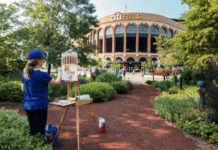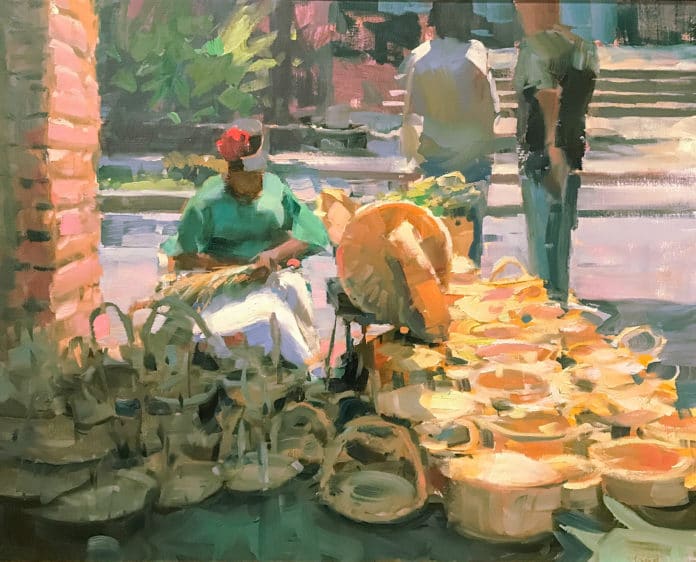
Georgia artist James Richards strives to paint the essence of his oil painting subjects by breaking their appearance down to pleasing shapes revealed by the light, and by painting those essential shapes without overworking unnecessary details.
How do we really recognize a person, object, or landscape? The answer has more to do with our perception of sizes, shapes, and patterns — the essence of the being — than it does with the particular details of clothing, surface decoration, vegetation, or coloration. That’s one of the things James Richards was encouraged by his mentors to think about; the basic shapes, patterns, and values related to the subjects he wanted to paint.
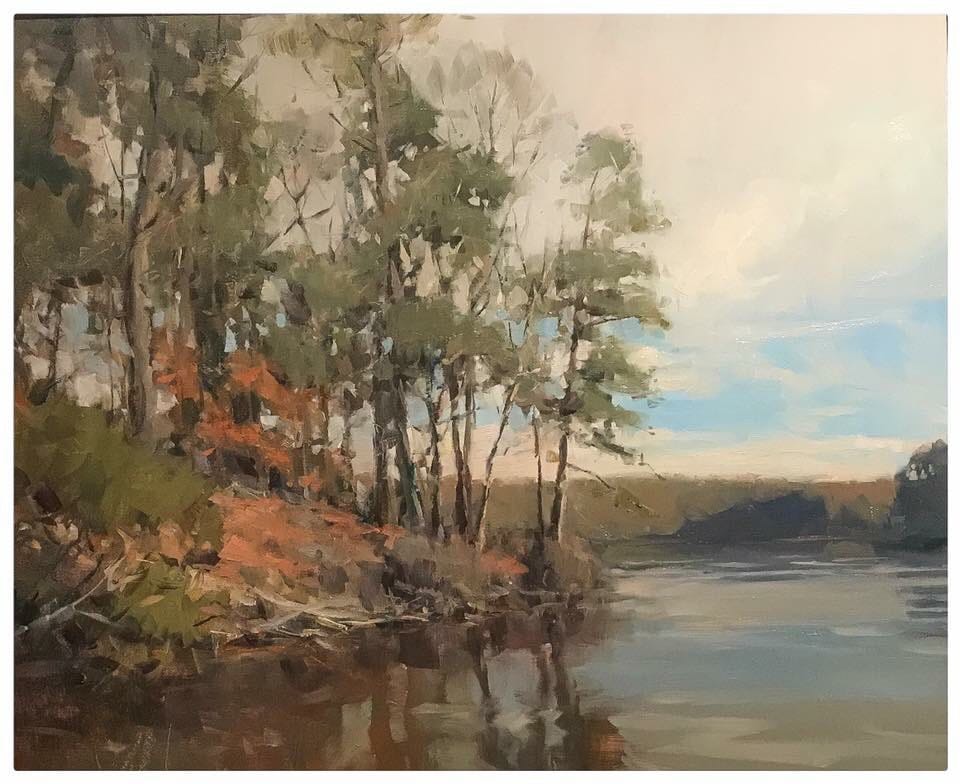
“Quang Ho encouraged me to find different ways of identifying the essence of subjects and to establish a dialogue between the abstract shapes that contribute to that essence,” Richards recalls. “Ever since that workshop, and others, I’ve been trying to break down subjects into pleasing shapes revealed by the light, and, at the same time, to avoid painting a bunch of things. I’m still scratching the surface of what Quang taught, but every day I paint I am amazed by how many new avenues are available to me.”
Sometimes Richards finds the best way to identify the essence of a subject for an oil painting is to come upon it accidentally, without any planning or preconception, and simply respond to what inexplicably caught his attention.
“Like other plein air painters, I do have my favorite painting spots and I will often return to the locations that inspired me in the past,” Richards says. “But sometimes I have fun and create more exciting work when I see a subject in an instant and immediately get motivated to paint it. The appeal has everything to do with a momentary pattern of light and shadow. I just throw down my supplies and attack the scene without much forethought. I trust that something will come out of the effort.
“In those situations, I rely on intuition rather than planning, and I allow things to happen in unpredictable ways without concern for methodology. That’s usually when magic happens and the unpredicted, unplanned, and unimagined painting captures everything important about the subject. In many cases, representing that essence with bold, bravura brushwork helps capture what I saw and felt at the moment I decided to paint the scene. It’s that kind of excitement and immediacy I am after in my paintings.”
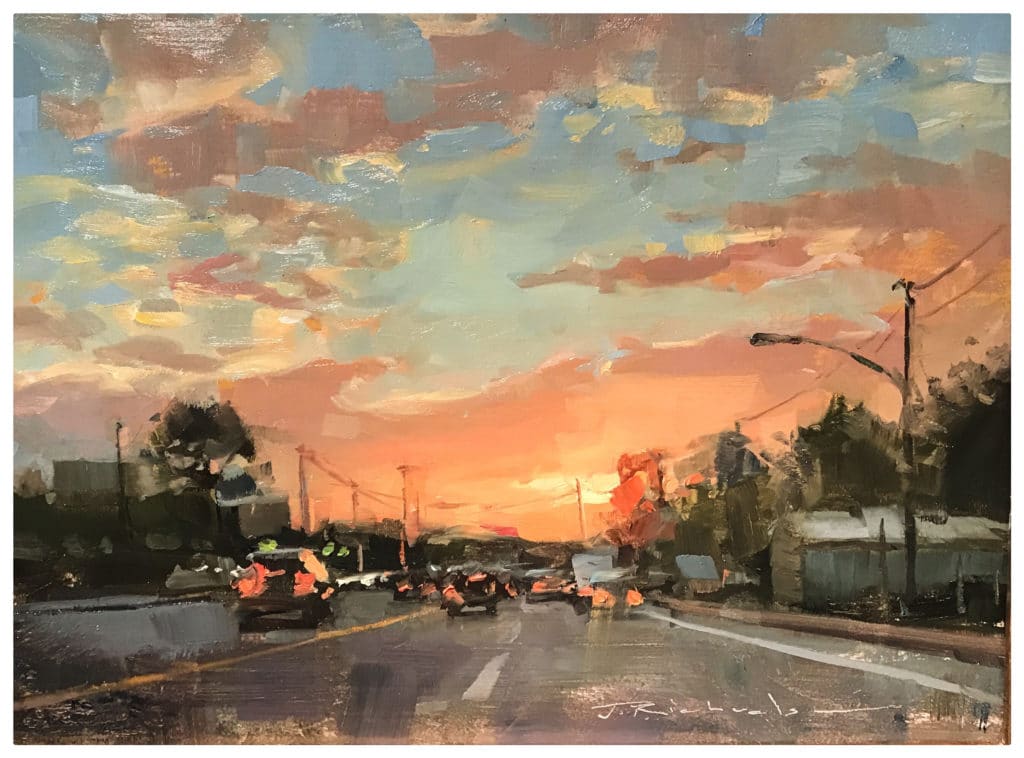
This kind of magic is more apt to happen for Richards on sunny days, so it is fortunate that he lives outside Atlanta, Georgia, where the sun shines brightly about 218 days a year. “Strong sunlight automatically sets up distinctive value patterns in the landscape,” the artist says. “I just find it more comfortable working with those strong contrasts than the subtle value transitions on an overcast day.”
When Richards ventures out to paint on location, he has available several pochade boxes and a French easel he can choose from, depending on the size and complexity of the painting he intends to create. After setting up one of those easels, he loads a palette with limited primary colors (a warm and a cool of each), plus a few earth colors and titanium white. He often adds Liquin or Neo-Megilp to his oil colors to make them more fluid and faster-drying. He also has a variety of brushes available so he doesn’t get “hung up on any one set of materials, methods, or approaches.”
“For beginners, I recommend starting a plein air oil painting on a toned panel because it is easier to judge values,” Richards says. “There is usually a warmth, even in cool landscape scenes, and it is best to begin by laying down a thin, transparent, warm tone during the initial design stage of the painting process. That allows painters to start by indicating essential information about light and shadow and value patterns without an immediate concern for accurate local color.
“One only needs two or three main colors to set the stage, and then gradations can be introduced. Unfortunately, I see a lot of artists jumping in to use every gradation of value and color right away. With that approach it’s much harder to relate the values of everything in the scene together, and having to go back and forth modifying the values can create mud.”
He continues, “Often I start a painting with thin, transparent colors so I can wipe off oil color to edit the shapes as I gauge how the image is taking shape. One of the reasons I use oil-primed canvas outdoors is because the smooth surface makes it easy to subtract and add color. When I am satisfied with the direction of the painting, I use a brush and knife with thicker opaque paints to add weight to shapes and to establish hard and soft edges. I try to leave signs of each stage so the painting process is visible in the end.
“Part of this process of manipulating transparent and opaque color is a quest to find the mystery in an image that will appeal to me and the viewer. In many ways, it is more about what I wipe out or never add than it is about what I do add. I constantly ask myself, ‘What do I need to tell my story about the subject, and what is it I don’t need?’ It’s me speaking through the language of paint to express an idea.”
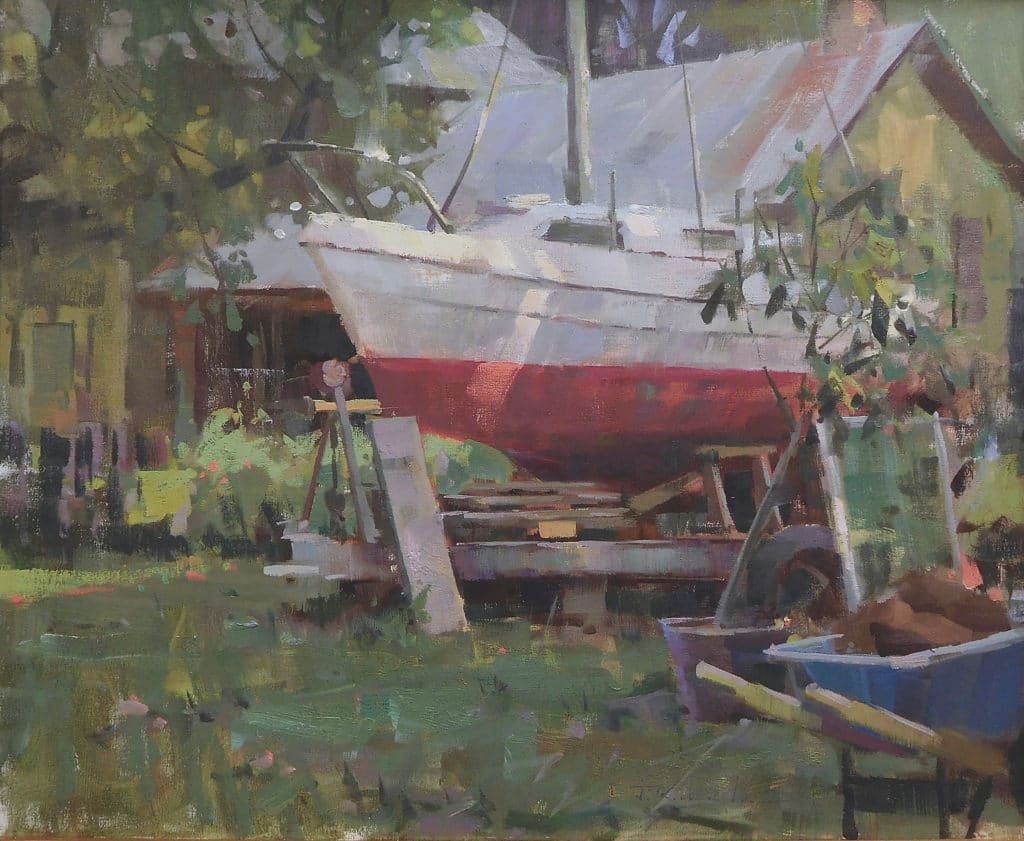
Richards says his approach to studio painting is quite similar to the one he uses outdoors, except that he can work on larger canvases and spend more time experimenting with tools and techniques when he is in the studio.
“I like to experiment with standard and unusual tools to establish interest on the surface of the canvas before worrying about the subject,” explains the artist. “I might make radical changes in the surface, lose and find the subject, work and rework the composition while always being mindful of the goal I established when I first decided to tackle a concept. That concept might be about color relationships, layers of paint, or whatever gives me the idea of ‘what if?’ It’s a continuous learning process, learning about the painting process and about myself.”
For the past five years, Richards has owned his own art gallery and atelier, and he offers mentoring to about 50 students whose experience ranges from beginner to advanced. He also offers monthly workshops in his atelier. “I enjoy teaching, offering demonstrations, moderating critiques, and painting with students all day,” he says. “In my experience, people interested in art are among the nicest people one could meet.”
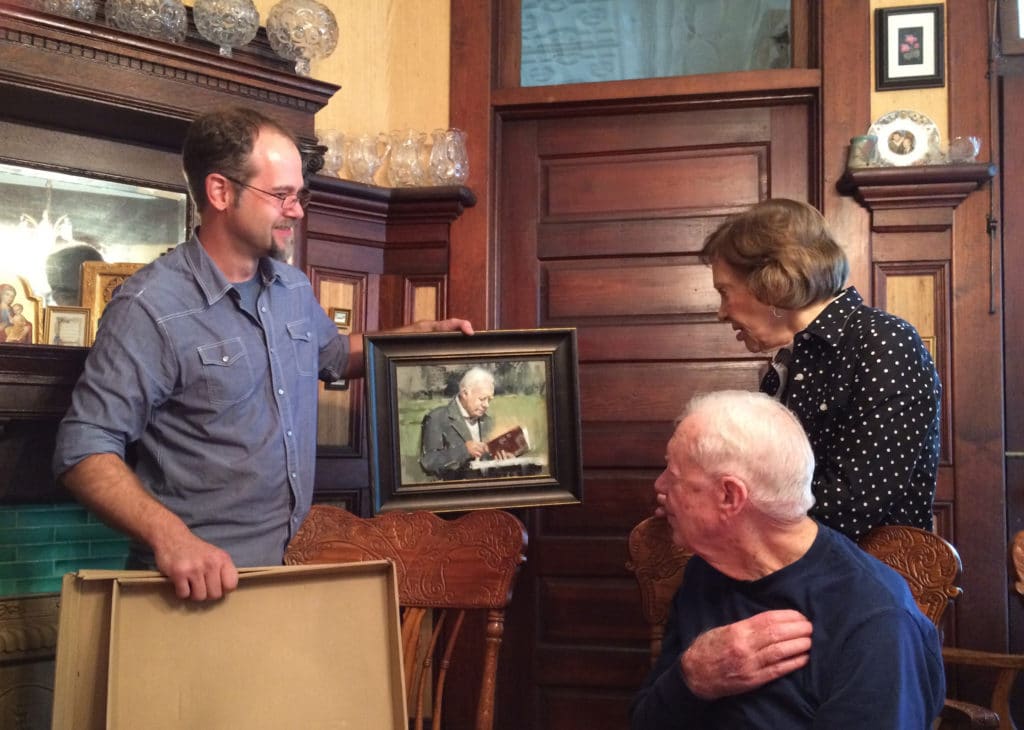
Richards has had some brushes with greatness in recent years. He has become a friend of former President Jimmy Carter, and he was invited to share Thanksgiving dinner with the Carter family in 2016. The personal connection between the two developed during a unique fundraising event in the president’s hometown of Plains, Georgia. Richards taught an art class for Carter and the celebrity chef Paula Deen, as well as 50 people who paid $500 each to participate.
“I’ve offered demonstrations at various fundraising events, and during one of them President Carter and Mrs. Carter sat in the front row and watched intently,” Richards says. “The president taught art to sailors when he was in the Navy and says he always has a palette with wet paint ready to go. I am now set to paint a portrait of the president every year and allow the portrait to be auctioned for the benefit of the Carter Center in Atlanta.”
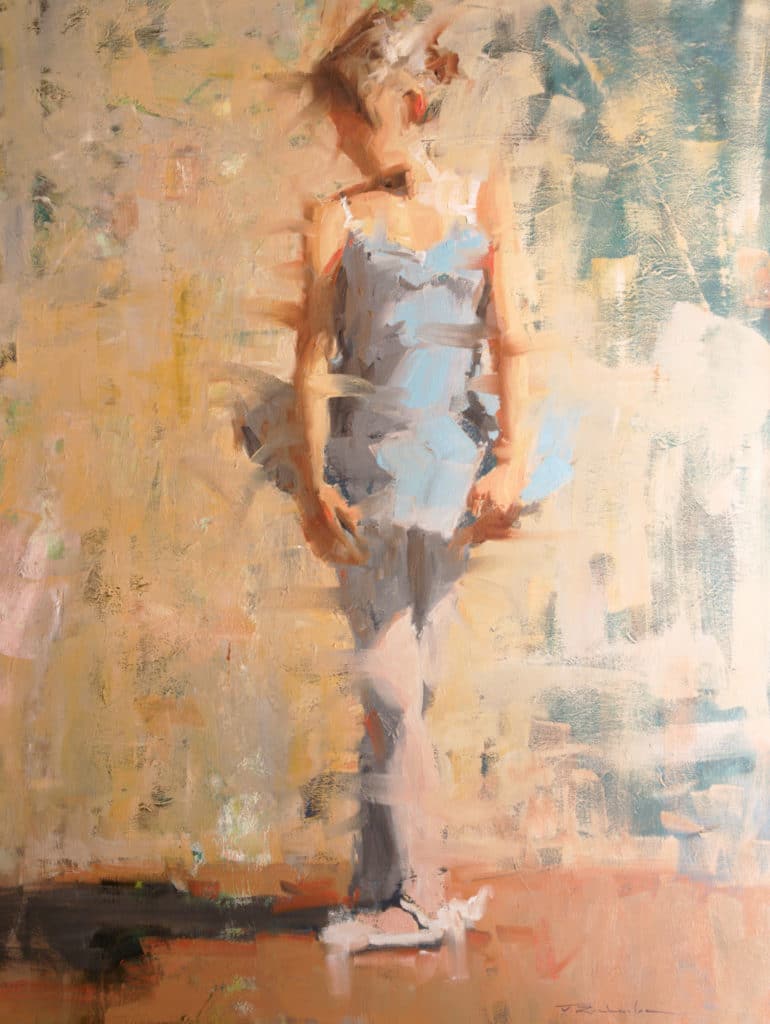
Visit the website of Georgia artist James Richards at artistjamesrichards.com.
Upcoming travel and art events with Streamline Publishing:
- October 11-19, 2019: Fine Art Connoisseur Art Trip to France
- November 10-13, 2019: Figurative Art Convention & Expo
- May 2-6, 2020: The 9th Annual Plein Air Convention & Expo
- June 7-14, 2020:Publisher’s Invitational: Paint Adirondacks
Like this? Click here to subscribe to PleinAir Today,
from the publishers of PleinAir Magazine.

